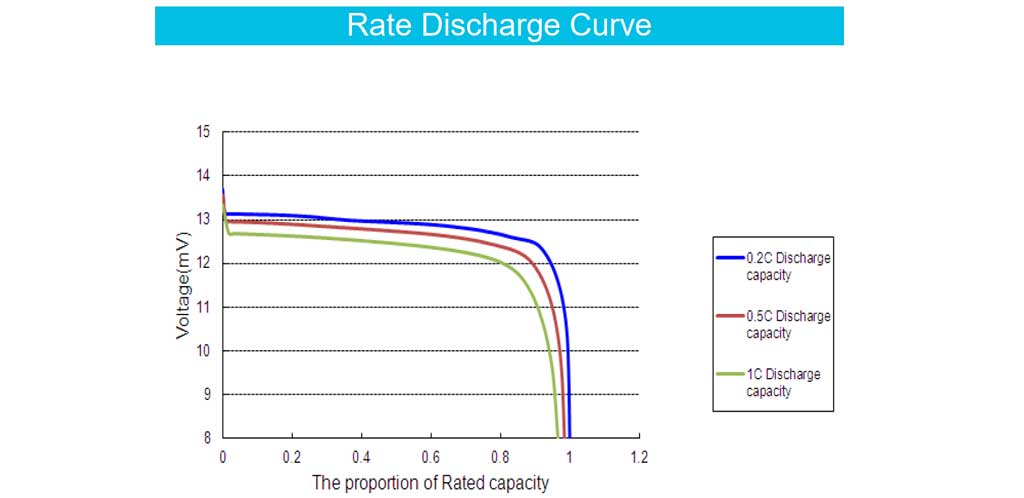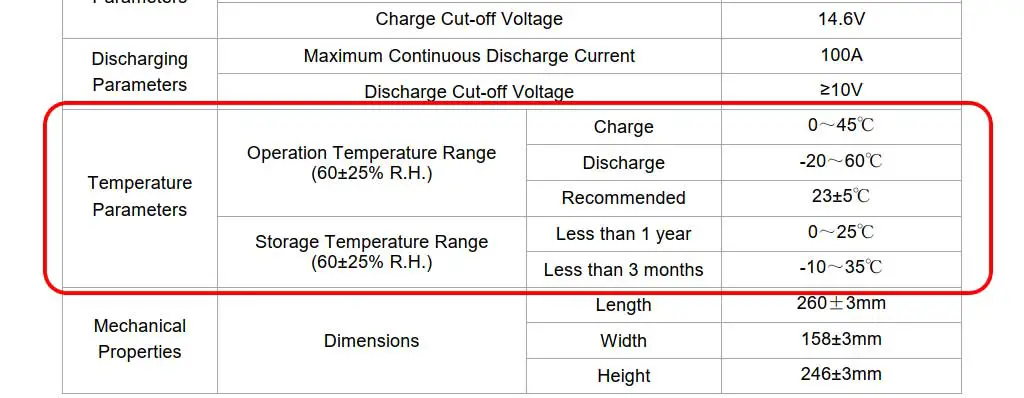A LiFePO4 battery easily lasts up to 5,000 cycles at 80% depth of discharge, which means this battery will last a maximum of 5-8 years.
LiFePO4 battery is probably the most durable commercial battery available in the market right now.
It has much larger cycles than some of its closest competitors.
Let me take a lead acid battery as an example; it has only around 1,500 cycles.

LiFePO4 Charge Cycle Graph Explanation
The graph in the above figure shows the aging process of a LiFePO4 battery. It was done at 100% DOD (depth of discharge).
It means a full discharge cycle has been conducted for the study purpose. In normal cases, 100% DOD will not happen.
Further, in battery research, we usually conduct charge-discharge cycles till their capacity loose to 70%. At that point, we consider the battery is out of its life.
Now in the above graph, it has been done to 80%. It means, this battery can go more cycles in real use.
The graph shows, 2000 cycles under 100% DOD. The capacity loss is still at 80%. The loss rate is very low too.
All this evidence that LiFePO4 battery can go much more cycles and hence it has a great lifespan.
The above figure was retrieved from the Renorgy 12V 100A battery datasheet.
However, several factors determine the lifespan of a LiFePO4 battery. These factors include the depth of discharge, operating temperature, battery condition, etc.
Using it according to the manufacturer’s specifications will easily get 10 years from this battery.
Why Do LiFePO4 Battery Last Longer?
In a research paper published in the Journal of The Electrochemical Society, researchers claimed that LiFePO4 batteries last so long because of their superior materials, safety, and lack of expensive transition metals.
Battery Chemistry
LiFePO4 battery has a lithium iron phosphate cathode and graphite carbon electrode anode with a metallic backing.

These two are unique cathode and anode materials, and they prolong the charge cycle of this battery.

In a word, the LiFePO4 battery has superior chemistry for longer lasting. It has aluminum foil covers to protect the battery from thermal effects.
Besides that, improved charge efficiency does not damage the battery if you remove it from charging at any stage. It directly helps this battery last many charge cycles.
Self-Discharge Rate
The self-discharge rate is another reason the LiFePO4 battery lasts so long.
When you are not using this battery, it will self-discharge at a 2% rate per month.

The discharge rate is lower than the lead acid battery.
So, you can understand why the LiFePO4 battery has a much larger charge cycle than a lead-acid battery.
LiFePO4 battery has a better Round Trip Efficiency (RTE) than other batteries, which is another reason for its long-lasting operation.
The amount of energy put into the storage can be retrieved in the future.
The RTE of the LiFePO4 battery is 92%, whereas the RTE of a lead-acid battery is only about 75%.
Higher Temperature Range
Temperature is a crucial factor that can seriously affect a battery’s lifespan.
High temperatures can reduce the lifespan, and lower temperatures can damage the system.
But in the case of LiFePO4 batteries, the temperature range is pretty high, which means that this battery can charge and discharge pretty well under a wide range of temperatures.

Generally, you can keep your battery from -20 degrees Celsius to 40 degrees Celsius.
LiFePO4 battery has superior thermal protection.
Because of the aluminum and copper foil, it can withstand extreme temperatures.
Integrated BMS
Most LiFePO4 batteries come with an integrated battery management system.

The BMS protects the battery from overcharging, overcurrent, and other threats.
Anyway, remember there are several causes that can really reduce the lifespan of your battery. So make sure you follow the proper methods to maintain your LiFePO4 pack.
Lithium Ion vs. LiFePO4 Battery
According to Andrew Lerma, an R&D scientist at Flux Power, Lithium Ion batteries have a maximum of 2000 to 3000 charge cycles and will last around 5 years.
This is quite less than LiFePO4 batteries since it gives 5,000 charge cycles.
Where a lithium-ion battery will last a maximum of 3 years, a LiFePO4 battery will last about 10 years.
Lead Acid Battery vs. LiFePO4 Battery
Lead-acid batteries only have around 1,500 charge cycles. As a result, like a lithium-ion battery, it will also last about 2 to 3 years.
But you have to take proper care of this battery as extreme heat, and cold heavily affect the battery.
On the other hand, the LiFePO4 battery has a maximum of 10 years lifespan with 5,000 charge cycles.
So, lead acid batteries have a far less charge cycle and lifespan than LiFePO4 batteries.
Lithium-ion and lead-acid batteries are the most used ones, but both have less lifespan than the LiFePO4 battery.
The following table shows the lifespan of various batteries.
| Battery | Charge Cycles | Expected Lifespan |
| LiFePO4 | 5,000 | 10 Years |
| Lithium-Ion | 2,000 – 3,000 | 5 Years |
| Lead-Acid | 1,500 | 2 – 3 Years |

Eng. Matthew Joseph Nandirio is the Founder of walkingsolar.
After graduating from the University of Houston in 2002, matt started working as a Solar Electrical Engineer for several multi-national solar energy companies.
He has a wide range of experiences including solar system requirement analysis, planning, maintaining, debugging and even solar device development through research.
He now shares his 20 years of expertise through his articles on the walkingsolar website.
Further, he is also the author of two books on Solar Technology, “Solar Power for Villages” and “DIY Solar System for Dummies”.
